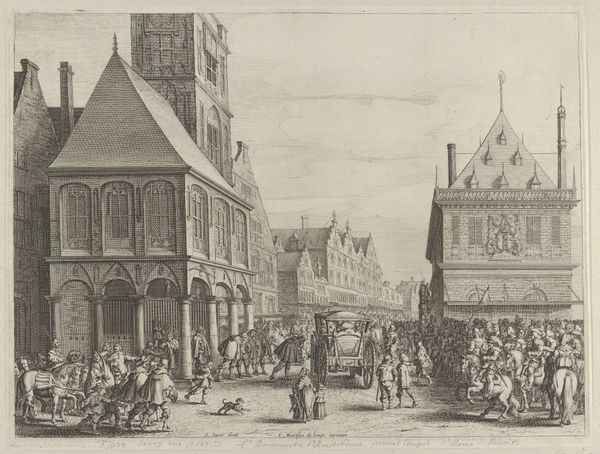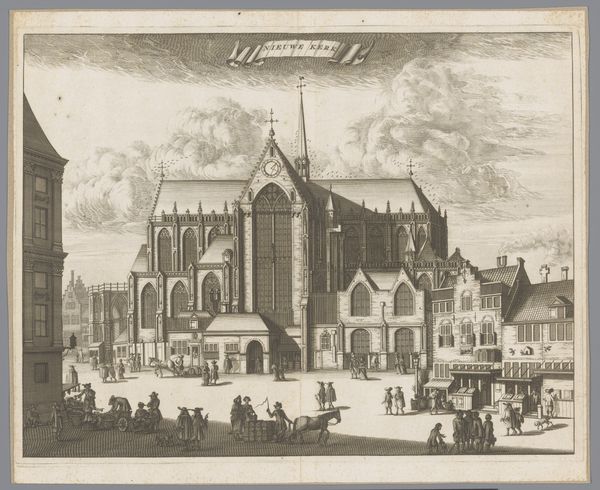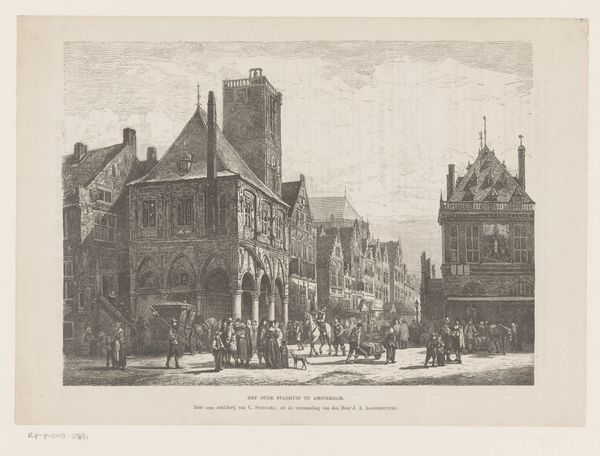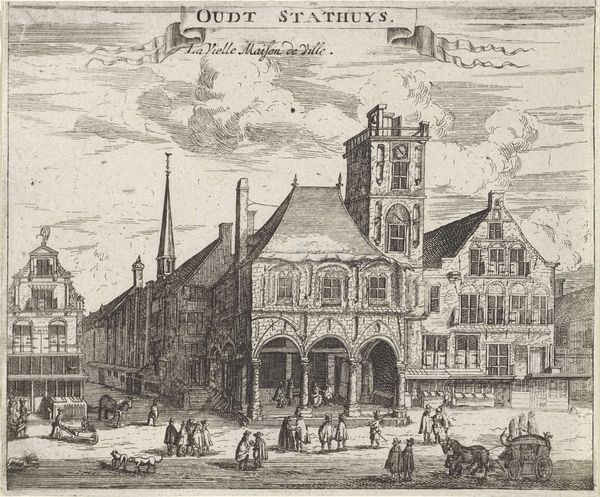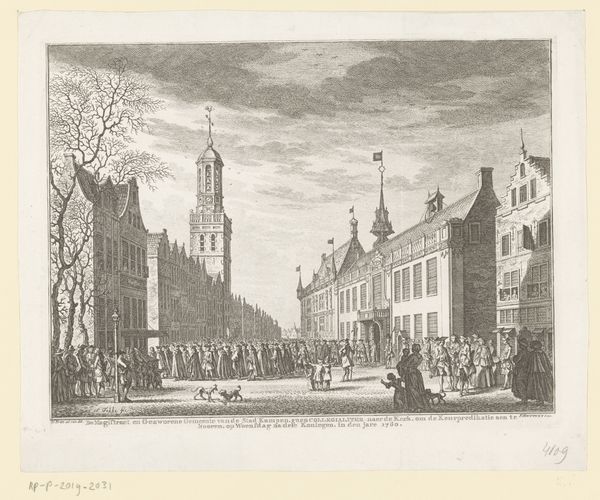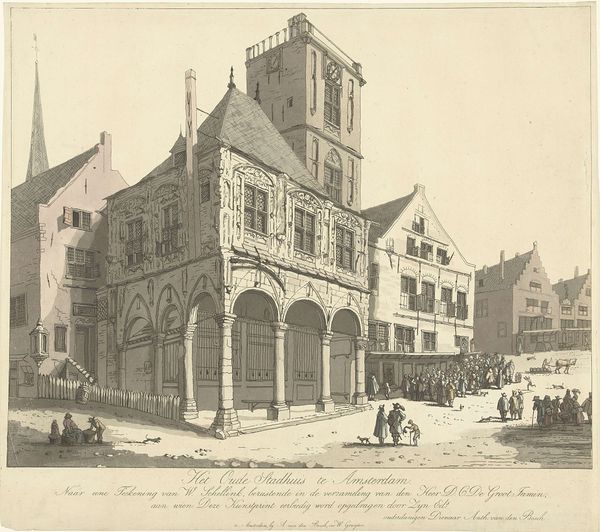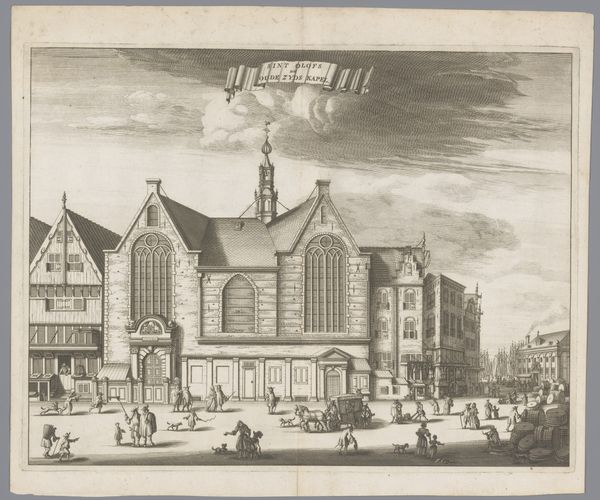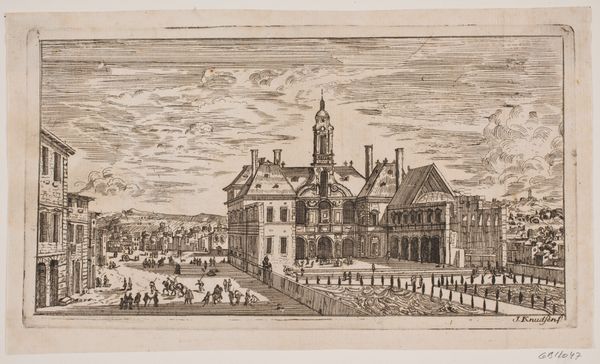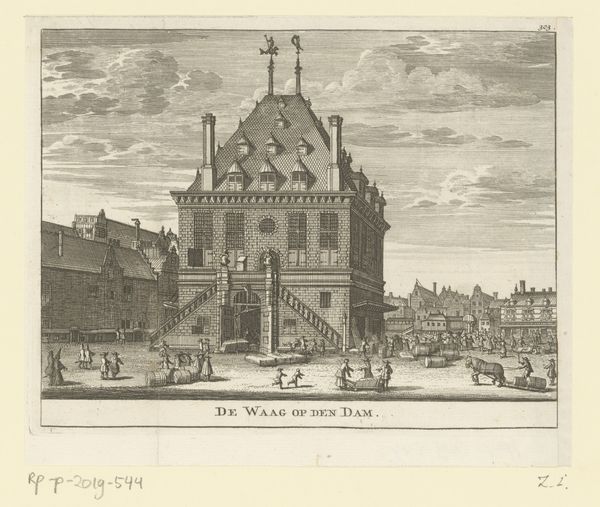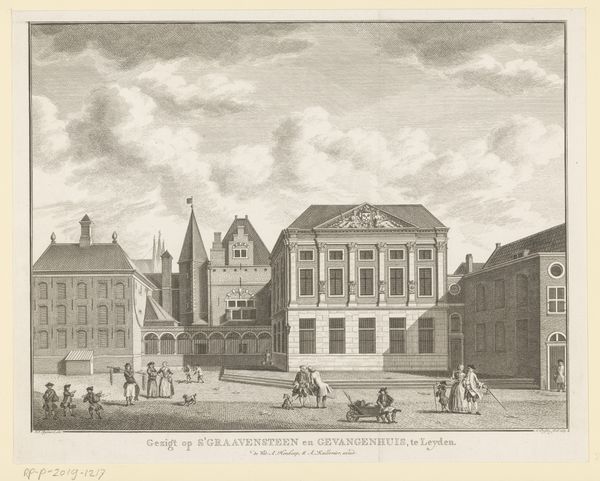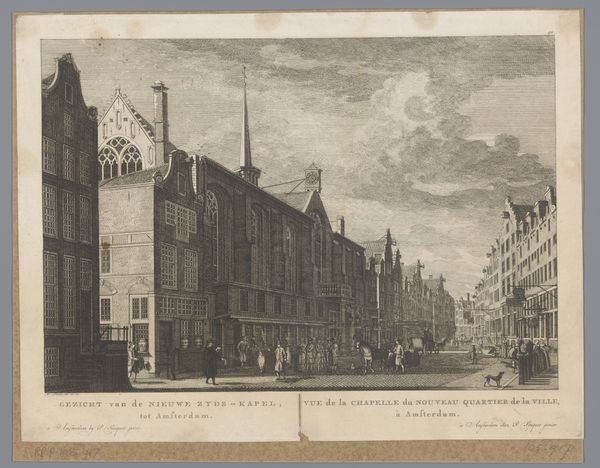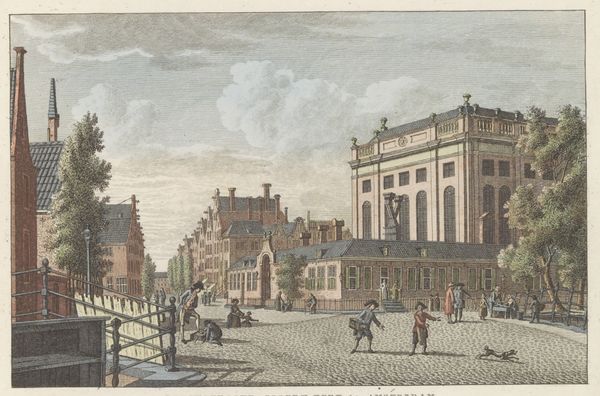
print, engraving, architecture
#
baroque
#
dutch-golden-age
# print
#
old engraving style
#
cityscape
#
engraving
#
architecture
Dimensions: height 194 mm, width 301 mm
Copyright: Rijks Museum: Open Domain
Editor: Here we have "View of the Old Town Hall in Amsterdam," an engraving by Jacob van Meurs dating from the 1660s. There's something both grand and gritty about this cityscape. What stories do you think it whispers about the power structures of its time? Curator: This engraving invites us to consider the socio-political landscape of 17th-century Amsterdam, doesn't it? Look at the bustling figures juxtaposed with the imposing architecture. What narratives do you think this image constructs about civic identity and governance in the Dutch Golden Age? Consider the distribution of bodies within the space: who is centered, who is at the margins, and what kind of relationships does this suggest? Editor: That's fascinating. I hadn’t considered it in terms of who occupies the space, but the hierarchy seems pretty clear now that you mention it. The well-dressed figures dominate the foreground. But what about the inclusion of everyday life—the dogs, the merchants—does that soften the power dynamic at all? Curator: I would argue it doesn't soften, but rather reinforces. Embedding everyday life within this scene normalizes the existing power structures. It says, "this is how things are, how they always will be". The presence of working-class citizens allows for wealthy governance to be viewed as an ordinary day-to-day occurrence. We must always be careful to note what is included and, importantly, what remains absent. This creates what some scholars refer to as a social performance that plays to a large audience. What message does this curated performance ultimately deliver? Editor: That makes perfect sense. Seeing it as a "curated performance" is helpful. I guess I had a naive view that art from this period was just about aesthetics. I’m going to approach these kinds of works differently moving forward. Thanks for sharing this unique viewpoint. Curator: Remember, art always exists within a social fabric, reflecting and shaping it in equal measure. Our task is to continually question and analyze that relationship.
Comments
No comments
Be the first to comment and join the conversation on the ultimate creative platform.
